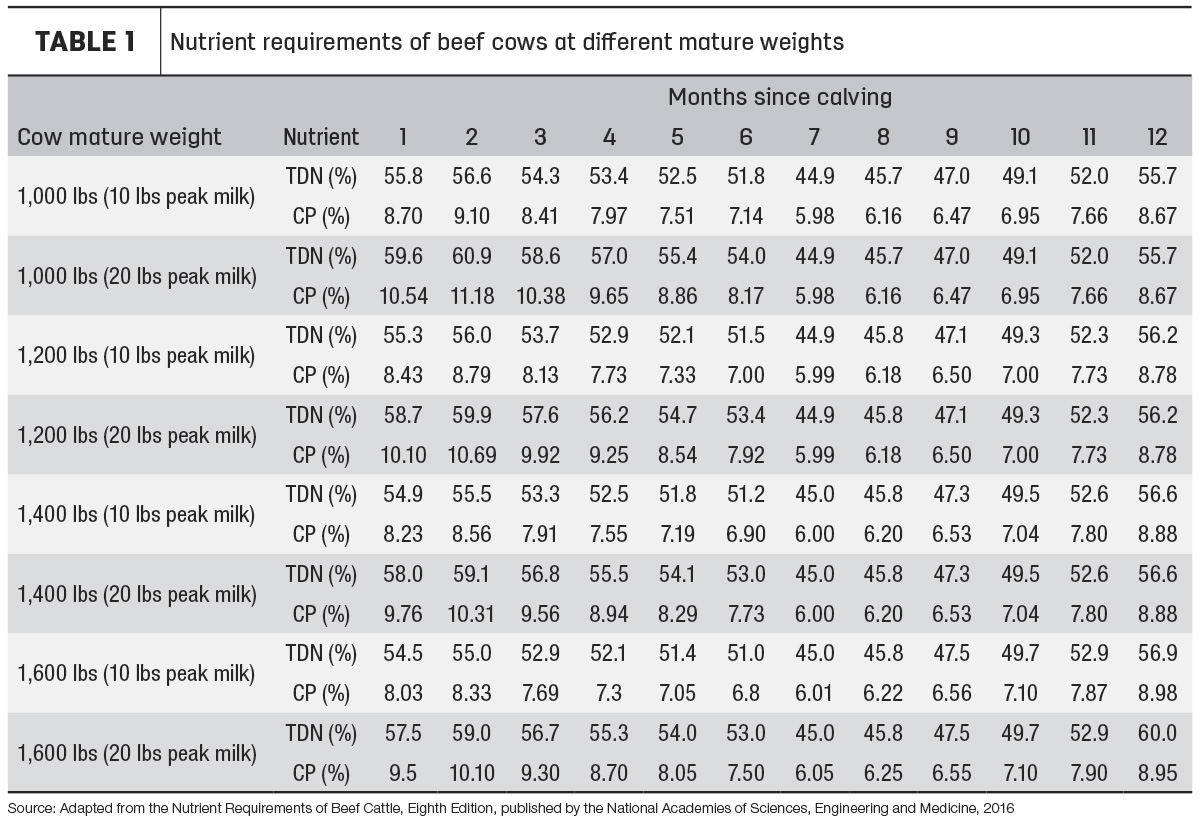Every year around this time, some of us find ourselves filled with mixed emotions. As temperatures drop, we are pleased by the reprieve from sultry summer afternoons, the natural abatement of biting flies, mosquitos and gnats, and football-filled weekends.
On the other hand, Old Man Winter also presents some of us with some very particular bone-chilling challenges, like calving heifers on the coldest, wettest nights thanks to our almost prophetic ability to plan timed A.I. 283 days before a winter storm. Always on our minds is how our warm-season pastures begin to lose their green hue to be replaced by a faint brown.
There is not a one-size-fits-all answer when it comes to supplementation strategies, and the most important thing to begin with is to not mistake supplementation for feeding. There are some parts of the country that need to feed cows through the winter, but many of us can get by with supplementing. If we can keep that in mind, we can lighten the load on our wallets. When we supplement cattle, our main goal is to fill in the gaps of a diet or provide the nutrients found at deficient levels. More often than not, the standing hay or harvested forage available during the winter months does not necessarily contain adequate amounts of nutrients needed to meet the cow herd’s nutritional requirements during critical periods such as calving, lactation and breeding. For the purposes of this article, the use of supplementation indicates that a free-choice supply of forage is available (i.e., hay or haylage) and mineral is provided free-choice.
At this point, it is time to ask ourselves a few questions.
Question 1: How do I know whether the forage my cows are consuming has adequate nutrients?
If we had a penny for the number of times we heard, “Oh, I know this hay I have is really good!” without an actual test report with accurate numbers on crude protein and energy values, we’d be at least $1.50 richer! So, first things first: It is important to get our forage sources tested so we can come up with a game plan to identify the deficiencies (if any) and alternative sources to make up for them. Only a forage analysis can provide us with exact energy and protein contents of such forage. As any extension specialist will tell you, “You can’t manage what you don’t measure.”
Question 2: Are the cows’ nutritional requirements being met by the forage consumed?
In general, a cow’s nutrient requirement increases as she approaches late gestation and calving. Approximately 30 to 60 days after calving, she will reach peak lactation, when nutritional demands will also be at their peak. Now, we have on our hands a cow that needs to maintain herself, produce high-quality milk for her calf and, most importantly, get ready to breed again in less than three months so she can still be a part of the herd. Table 1 can serve as a guide when it comes to energy (total digestible nutrients [TDN]) and protein (crude protein [CP]) requirements of cows at different mature bodyweights and peak milk production. Note that if a cow is a heavy milker, her nutritional requirements are even greater compared to a moderate milk producer.

Question 3: What is the best supplement to address deficiencies? Are liquid supplements better than dry ingredients or vice versa?
The first thing to consider here is the market in your area and evaluate what is available. Byproducts such as molasses, whole cottonseed, cottonseed meal, corn steep, soybean hulls, distillers grains, corn gluten feed and many others are all great sources of, in some cases, both energy and protein. Both liquid and dry sources have advantages and disadvantages. Liquids may have the ability to be offered free-choice with the presence of intake limiters, which will be reflected in reduced labor costs. Dry ingredients can offer more flexibility, but such advantage comes with a greater cost associated with increased labor for handling and delivery. There is a place for all the options; we suggest you visit with your consulting nutritionist or extension professional for help making the best decision.
Question 4: How much supplement should I provide to my cows?
In general, when supplementing a forage-based cow diet, supplements can account for 5% to 20% of the total daily dry matter intake, with the lower end representing strategies focused on protein and the higher end representing strategies focused on both protein and energy supplementation. If we assume a 1,200-pound cow has a daily dry matter intake of 2.25% of her bodyweight, the amount of supplement needed could range from 1.5 to 5.5 pounds daily. However, forage quality will play an important role on voluntary dry matter intake, and as quality declines, a decrease in intake will take place due to poor ruminal digestion caused by the consumption of the poor-quality forage.
To put things into perspective, let’s use a few different scenarios. Consider forages of three different qualities: high (56% TDN; 10% CP), medium (50% TDN; 7% CP) and poor (45% TDN; 5% CP). Now consider daily voluntary dry matter intake of such forages to be 2%, 1.75% and 1.5% of bodyweight, respectively, for a 1,200-pound cow. That leads us to 24 (13.44 pounds TDN and 2.4 CP; high quality), 21 (10.5 pounds TDN and 1.47 pounds CP; medium quality) and 18 (8.1 pounds TDN and 0.9 pound CP; poor quality) pounds of forage dry matter consumed daily.
If we refer to Table 1 again, a 1,200-pound cow producing 10 pounds of milk at peak lactation needs 56% TDN and 8.79% CP daily, which translates to 13.94 pounds of TDN and 2.2 pounds of CP. In our three scenarios here, the high-quality forage most likely can support this cow with very little energy supplementation and no protein supplementation; however, if we are providing forages in the medium and poor-quality range, this cow is consuming a diet that is deficient in both energy and protein.
Take-home message
Winter supplementation of energy and protein are crucial to maximize the herd’s performance. Fall-calving herds are typically near peak lactation this time of the year, meaning that cows are at their greatest nutrient requirements. The strategy for your herd will be based on:
- Forage quality
- Cow stage of production
- Cow body condition score (A supplementation strategy should be chosen to support a cow body condition of 5 or 6)
- Feed and labor availability in your area
Forage types and quality are going to differ dramatically throughout the U.S., but regardless of where you live, energy and/or protein requirements likely need to be addressed, and one cannot be effectively used in the herd’s diet without considering the other.









